And so to what is, on the face of it, a more challenging verdict at which to arrive.
Pitching one hot hatchback against another seems easy enough: you assess them both as hatchbacks and both as hot things, and then reach a pretty clearly defined decision. But how do you decide between a two-seat, lightweight roadster and a five-seat, five-door hatch?
Actually, it’s simple enough: we do it every autumn at our Britain’s Best Driver’s Car contest (Handling Day proper, as we know it), and the rationale by which we judge each car is straightforward. The thinking goes like this: if you had only one spudder to take you to the supermarket or the station when you needed it, which car would you take away from Handling Day for a year, knowing it’d entertain you more than any other in this contest’s line-up?
On Handling Day, it’s not always the fastest, most exciting or most powerful car that wins. All cars have suspension and steering (until cars that drive themselves turn up, anyway) and it is not necessarily more difficult to tune that on an affordable car than it is on an expensive one. Which is how some saloons have ended up comfortably mid-order while exotica have languished near the back. And how the £25k Toyota GT86 beat everything including £100k track-focused supercars a few years ago. Much the same criteria applies here.
First up, then, here is a car that has already beaten the GT86 in this contest. I’m a bigger fan than most people of the Toyota – and it has a lot of fans at Autocar – but I’ve no beef with that result. Everything I like about the GT86 is distilled and refined in the Mazda MX-5. Lightness, for example: the Toyota is a 1275kg car (even less than that when we road tested it), which is precious little for a near four-seat coupé.
But shorn of the need to carry two of those occupants and their trappings, the Mazda, despite having to be rigid enough to contain a folding top – an easily stowed piece of canvas genius of which Cotswold Outdoors would be proud – is 153kg lighter again.
Understandably, neither of the other two finalists can quite match that weight figure, and it’s no surprise that the smaller Renault is the closer of the two. At 1204kg, the Clio is only 82kg heavier than the Mazda MX-5, which ain’t bad given that it’s a five-door hatch, its four-cylinder engine wears a turbocharger and it has two clutches in its automated gearbox.
For those of us who are used to the way Renaultsport does things with the Mégane – by which I mean deathly seriously – the latest Clio was a peculiar diversion. Somehow it was just too… easy.
A lightweight in the metaphorical, bad sense of the word. The 220 Trophy rights so many of those wrongs, and it isn’t just the additional 20bhp. It’s tighter, keener, more composed and a bucket-load more engaging.
No wonder it saw off the rest of the hot hatch newcomers here.
When it comes to being serious about performance, mind, the Honda is the apogee of the breed at the minute, which is why it beat the Focus, an outcome that might not upset Ford too much.
The Civic Type R is allowed to be a car that is backed up by an ordinary motor in the garage. The purpose of a Focus ST is to be mildly entertaining while also being the ordinary everyday motor. That result won’t bother Ford, then: it’ll have another Focus RS along soon that’s closer to Honda spec. Only that will have four-wheel drive.
The Honda, to its credit, does a remarkable job of putting its 306bhp to the road through the front wheels only, thanks to its limited-slip differential and Honda’s take on the double-axis strut front suspension, aimed at reducing torque steer. Not that it does so completely.
The Honda’s steering wheel is a thing of decent precision and weight, but it does shuffle in your hands under power – more than the Renault which, shorn of having to cope with 295lb ft, has a less challenging rim out of tight corners.
Credit to the Honda, though. Despite weighing 1382kg and having as much power as it does, it has one heck of a front end on it. It finds extraordinary amounts of both grip and traction.
Given the amount of power with which the front wheels are expected to deal, perhaps it’s no surprise that the handling balance is nearly always biased around the leading end. Choose a line and the Honda will try to stick to it and, if it veers off, it’ll do so at the front first. Lift off and, despite a mechanical limited-slip differential that could tuck the driven wheels into a corner, there’s very little propensity to oversteer. On the road, that’s fine – the Honda’s limits are fairly preposterous anyway – but on a circuit, that can leave the Civic feeling a touch inert.
The Renault isn’t like that. It’s difficult to imagine that its front end is any stronger than the Honda’s – although obviously it’s less troubled by torque steer – so it must just be that Renault has designed a more intimate connection with the rear wheels into the Trophy on purpose.
Barrel into a bend at Bedford Autodrome and the Renault will slip at its front first, but judge the cornering speed well, trail the brakes in as you begin to turn, to settle the nose and lighten the loads on the rear, and the Trophy shows the kind of composure and throttle adjustability for which Renaultsport is rightly renowned. And, you suspect, it’s not just more fun this way but also faster.
The lovely thing about the Trophy is that along with the balance, it steers well, while its body movements are deftly controlled to the extent that I’m almost inclined to give it the nod over the Honda. Almost; especially given that I’m a fan of smaller rather than bigger cars, and I think 306bhp through the front wheels is nearing the limit of driveability.
Were the Renault 10% more exciting here or there, or perhaps just came with an engaging gearbox, it’s what I’d pick. As it goes, though, by a whisker, the Civic nudges ahead of the Clio.
I shan’t attempt to pretend that the Honda stands a chance, mind, of competing with the Mazda here. There are hot hatchbacks that might compete with the MX-5 for entertainment – Renault’s Mégane RS or the Ford Fiesta ST, for example – but there was nothing sufficiently new to call them into this contest.In this finale, then, it leaves the Mazda in a class of one.
On the road, its agility and responsiveness – despite its power deficiency against both the Renault and the Honda – means it feels no less eager than either. In fact, because its gearshift is so keen to work with you, encouraging each gear home, and because its engine is naturally aspirated and responds when you ask it to, there is reason to feel that it’s more eager, albeit not faster, than the two hatchbacks here.
And on a circuit, it’s very obviously the most agile car, not just in this final but, barring the Caterham, in the entire ‘Junior Handling Day’ line-up. It steers quickly – maybe a bit too quickly for some of our testers’ tastes, and with it come some relatively quick body movements. Perhaps it rolls more – or more quickly – than either the Honda or the Renault. I’m not convinced that it settles as confidently as the Toyota does, so it demands a smoother driving style to keep it controlled.
But such is the immediacy and delicacy of the Mazda that there’s real reward to be had from driving it smoothly, and trying to coax it into the most satisfying cornering line possible. Be a bit ham-fisted with it and it’ll follow your line faithfully enough, while letting you know you could have done it better by rocking on its dampers.
But get it right – either by driving through smoothly and steadily, or by unsettling the rear on the way into a bend – and the MX-5 has the delicacy and, crucially, just enough power to indulge you in neutral-steer or mild oversteer that it’ll enter and exit smoothly. And the choice is mostly yours, so it’s an entirely blank page.
That’s enough for it to win here by more than just a short head. In fact, it has a composure that’s likely sufficient to enable it to win in most circumstances. Including the more challenging theatre of Handling Day itself? When that contest includes cars with the initials ‘GT’, supplanted by ‘3 RS’, ‘B’ or ‘12’? I’d say the Mazda has as good a chance as anything has ever had at this power level. Longer bets have come good. Either way, we’ll find out in October.
Lotus F1 driver Jolyon Palmer gives his view
Our test team was joined at Bedford by Lotus Formula 1 driver Jolyon Palmer, son of Jonathan. He has been Lotus’s third and reserve driver all season, having won the GP2 title last year with a points haul that exceeded even that of Lewis Hamilton, the most recent previous British winner, in 2006. Along the way, he acquired a reputation as an expert at quick passing manoeuvres.
Credible pundits put Palmer’s chance of getting onto the 2016 F1 starting grid as “around 50:50” but Palmer is happy to let his driving do the talking, given that his practice times have frequently matched those of Lotus regulars Pastor Maldonado and Romain Grosjean.
However, for these road cars, 24-year-old Palmer’s experience of his own Toyota GT86 was most relevant. He took to the GT86’s chief rival, the Mazda MX-5, immediately, enjoying its crisp steering and fine handling, although he reckoned he’d still opt for the GT86 on the very reasonable circuit driver’s grounds that you could sustain an oversteer slide more easily and for longer in it.
He also gave us his opinion of the Clio versus the class-leading Fiesta (deeming the Ford more desirable, not least because of its steering and manual gearchange) and conducted a mini-comparo of the Focus and Civic (preferring the Honda for its fine powertrain, speed and neatness on the circuit).
In fact, his road car opinions were so well expressed and generally on the pace that we’d have happily signed him for 2016 - but for a prior commitment.
Everyday handling heroes - Hot hatchbacks on test
Everyday handling heroes - Caterham 270R versus Mazda MX-5 and Toyota GT86
Everyday handling heroes - Honda Civic Type R versus Ford Focus ST-2
Everyday handling heroes - How much fun can be had for £30,000?
Get the latest car news, reviews and galleries from Autocar direct to your inbox every week. Enter your email address below:


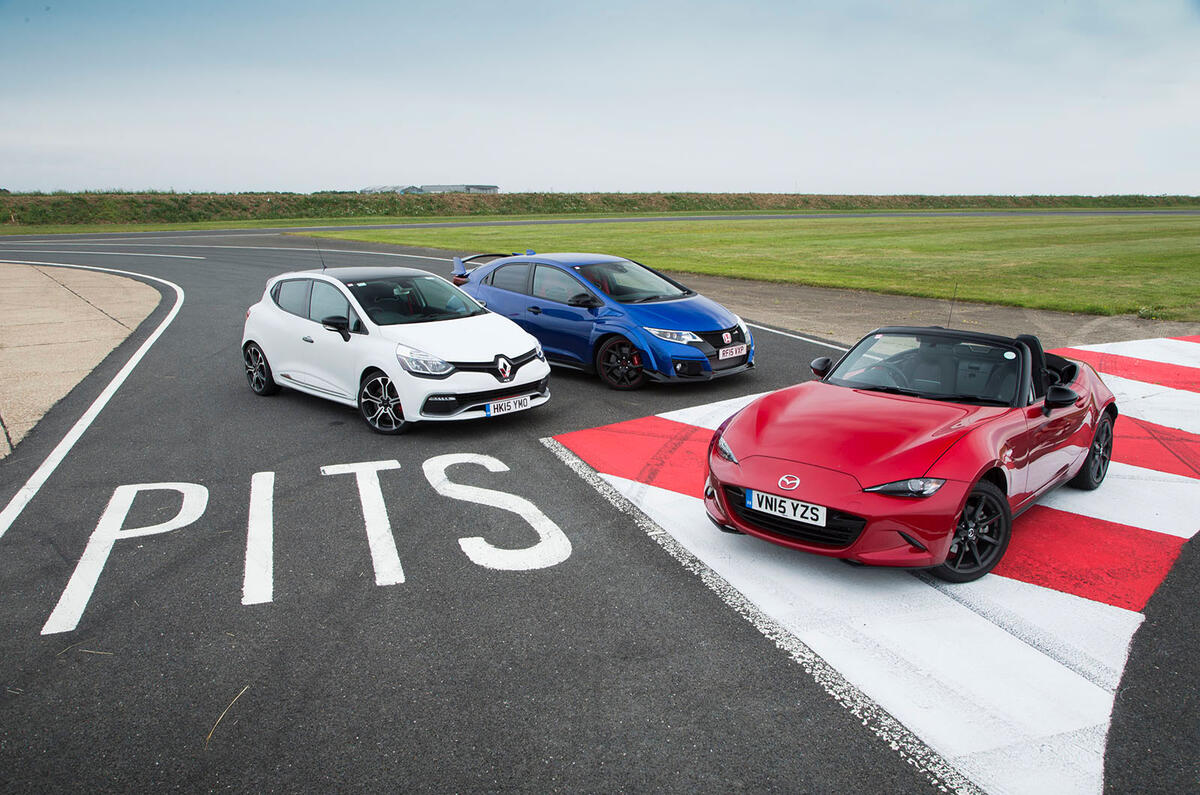
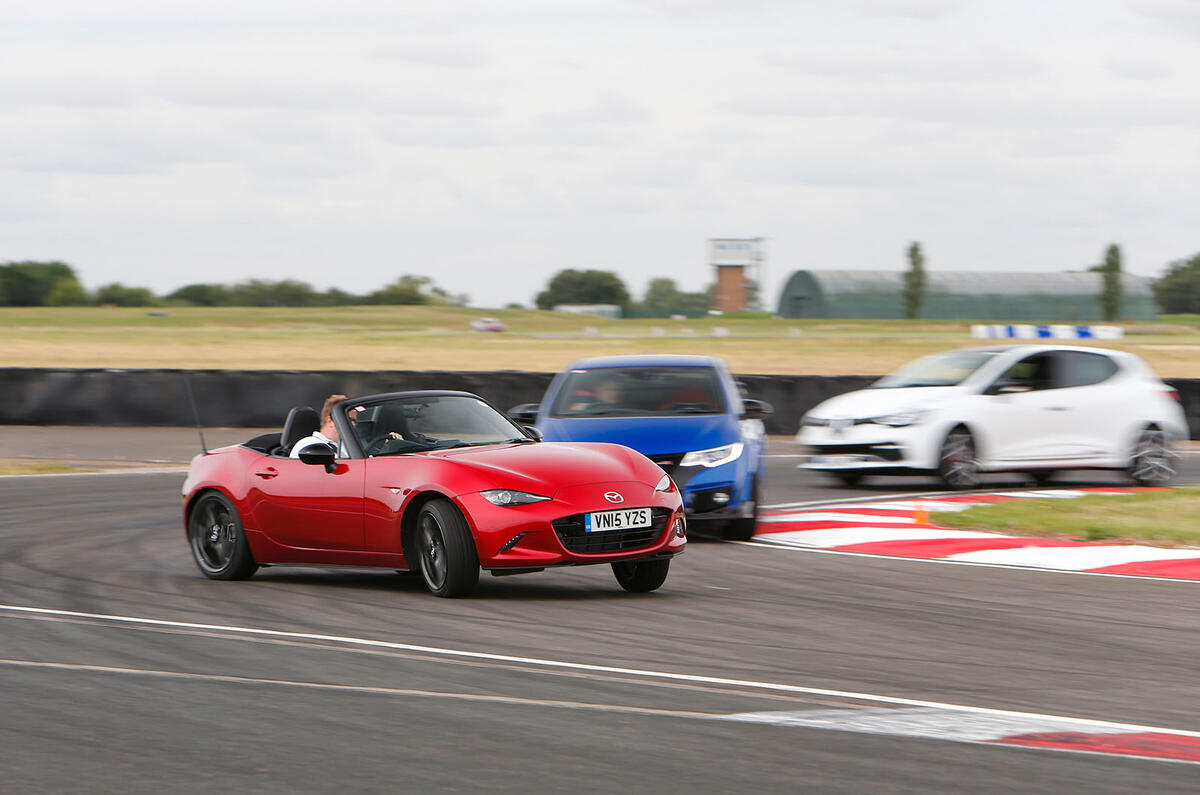
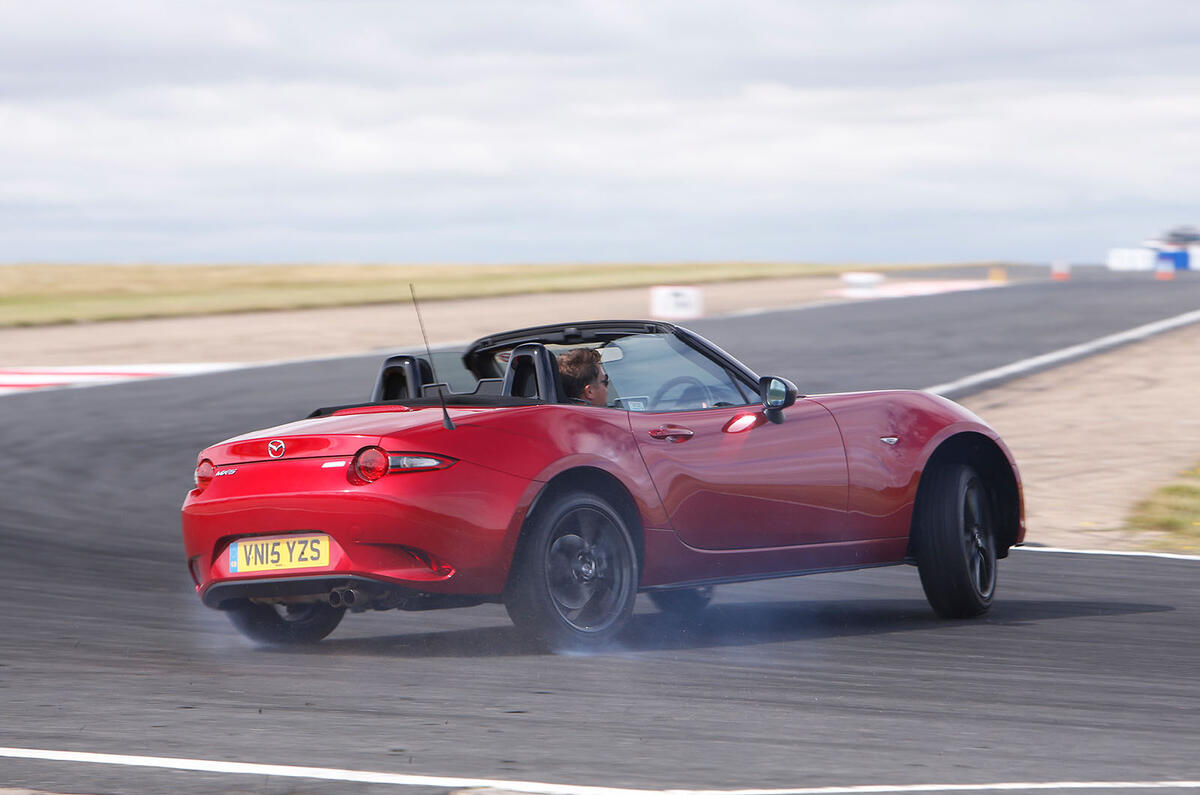
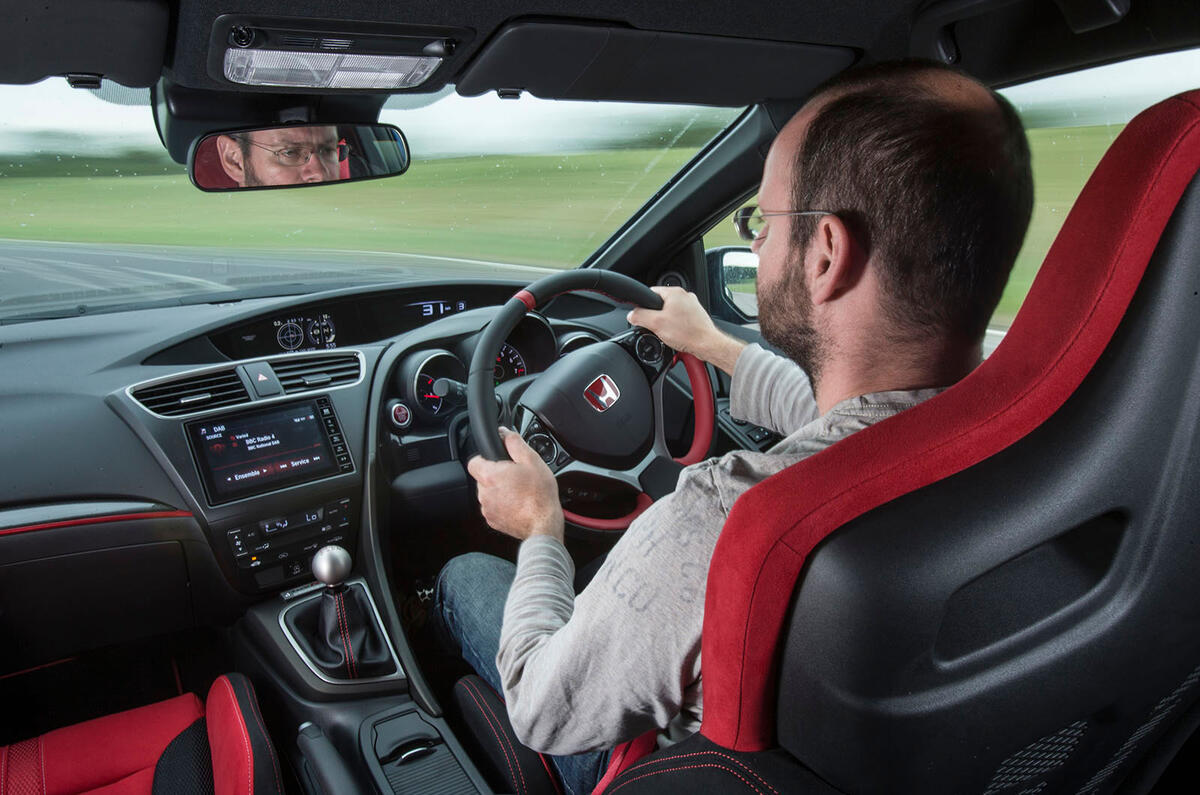
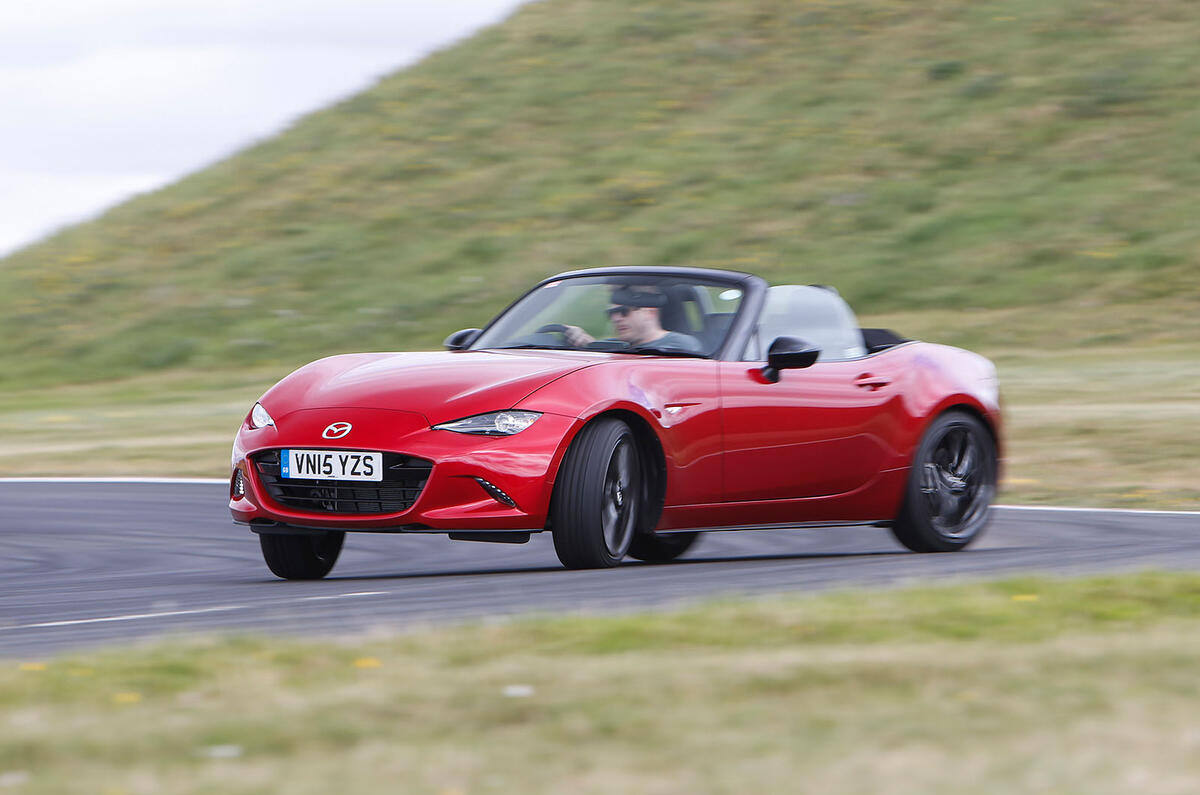
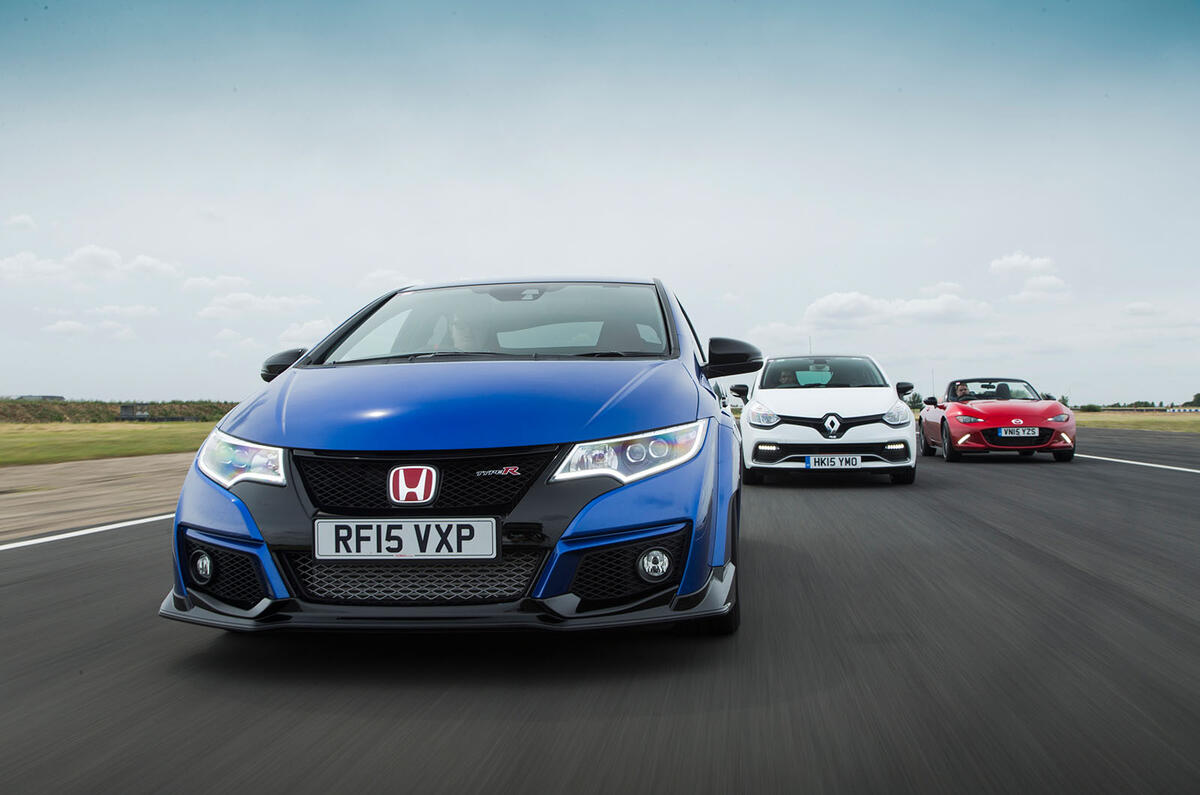
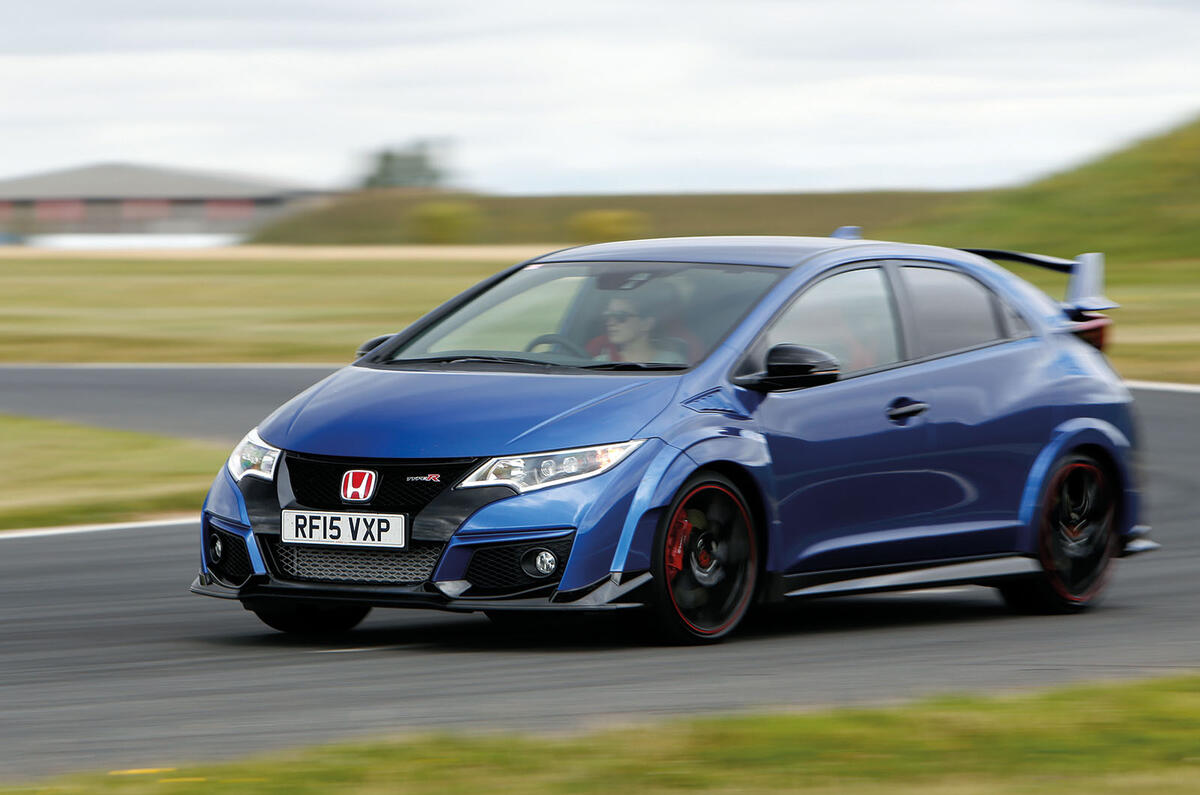
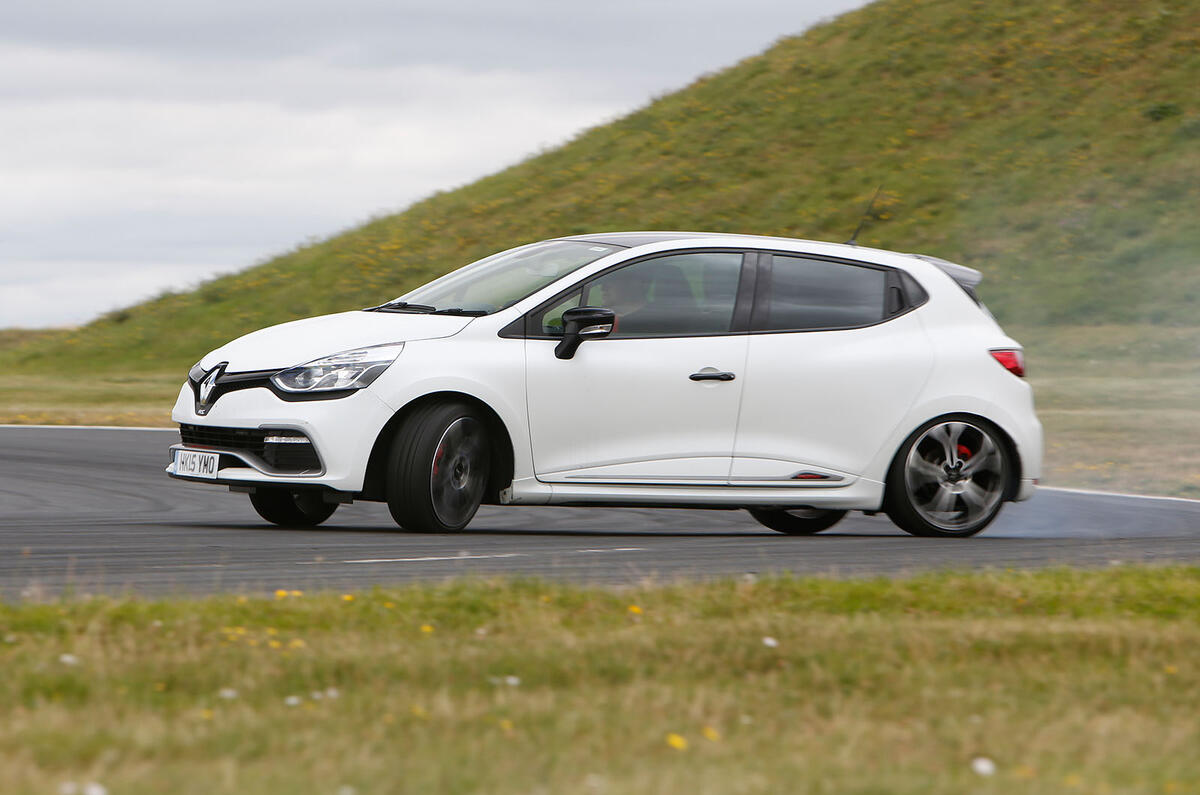
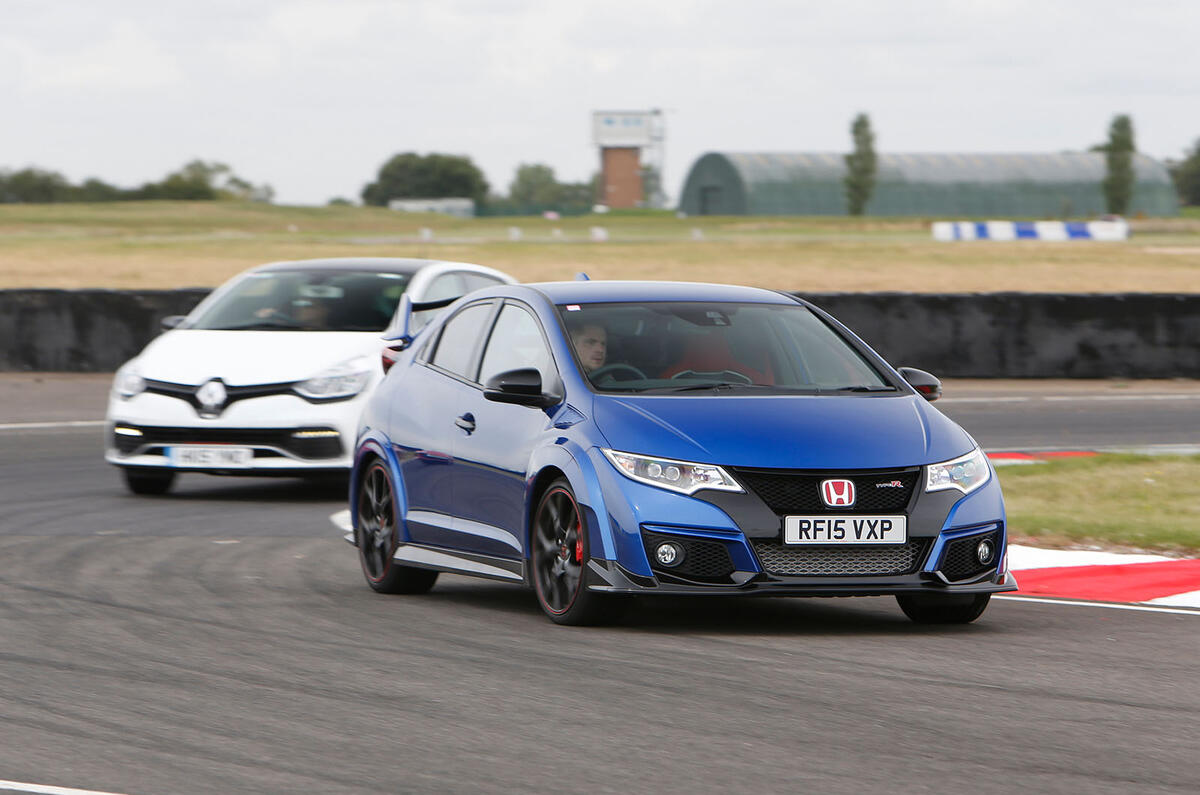
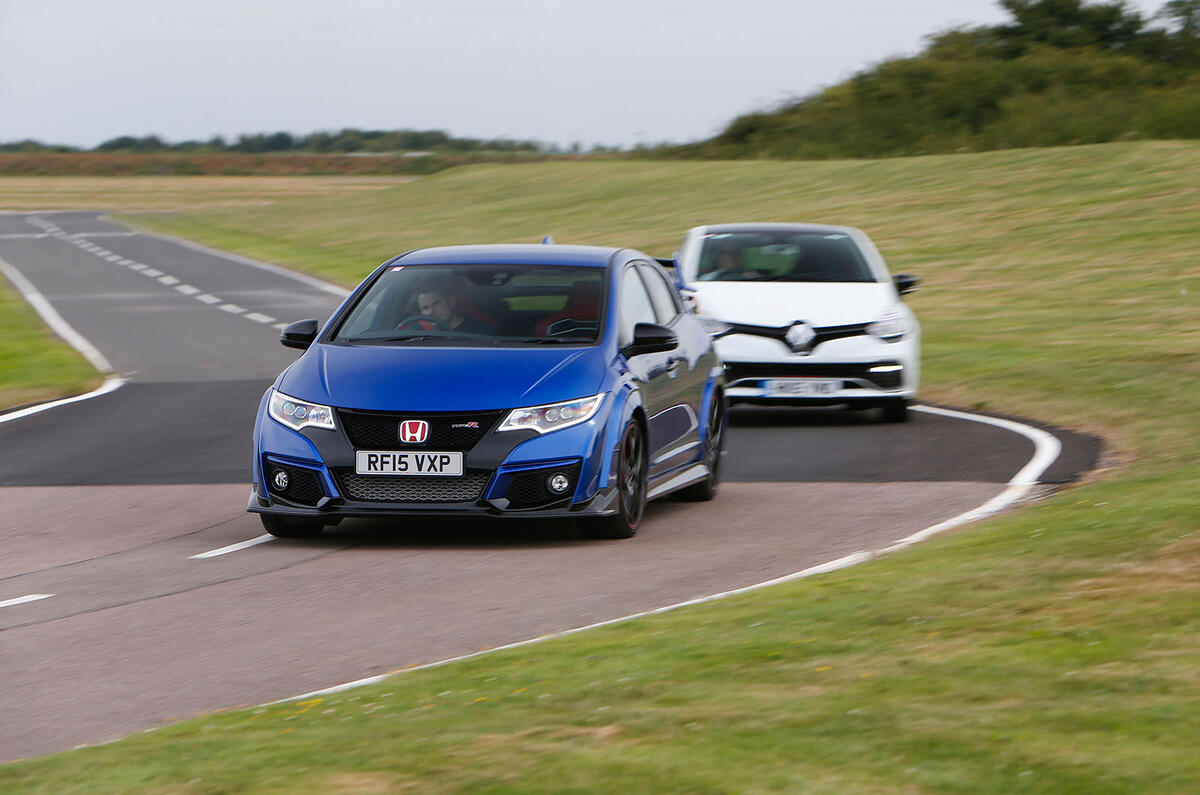

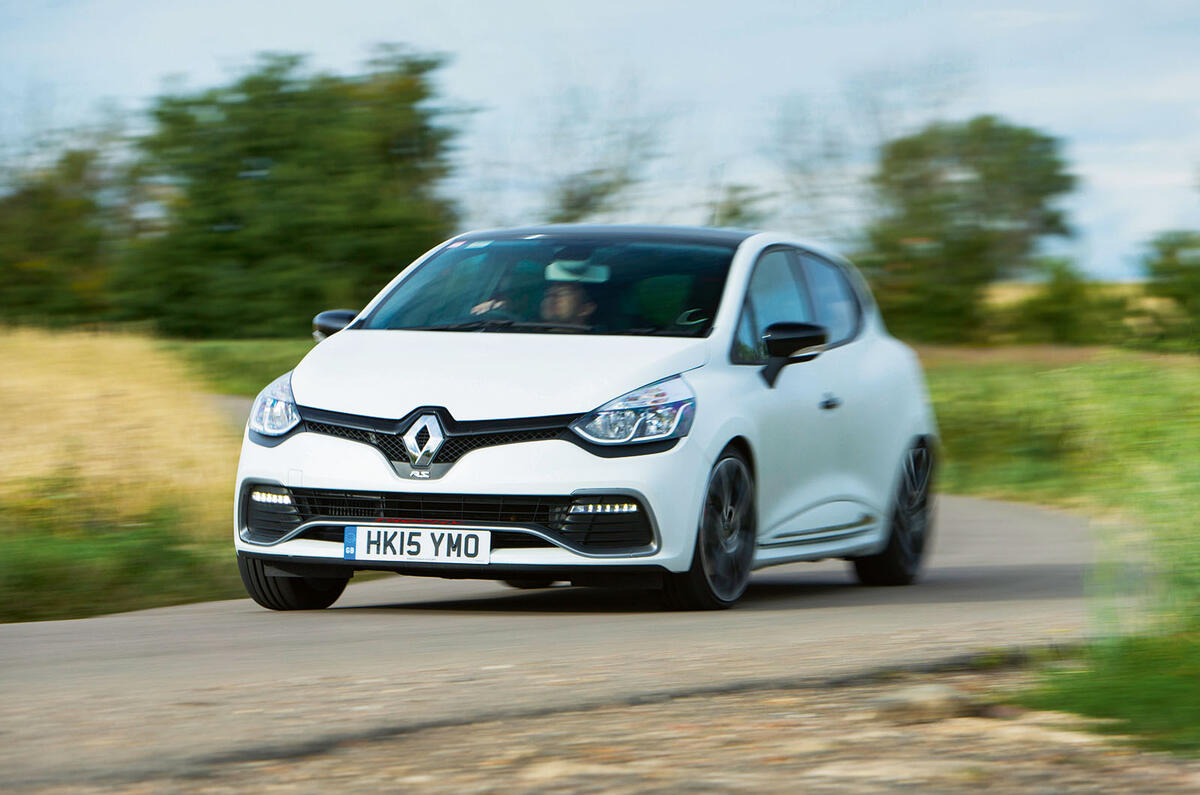
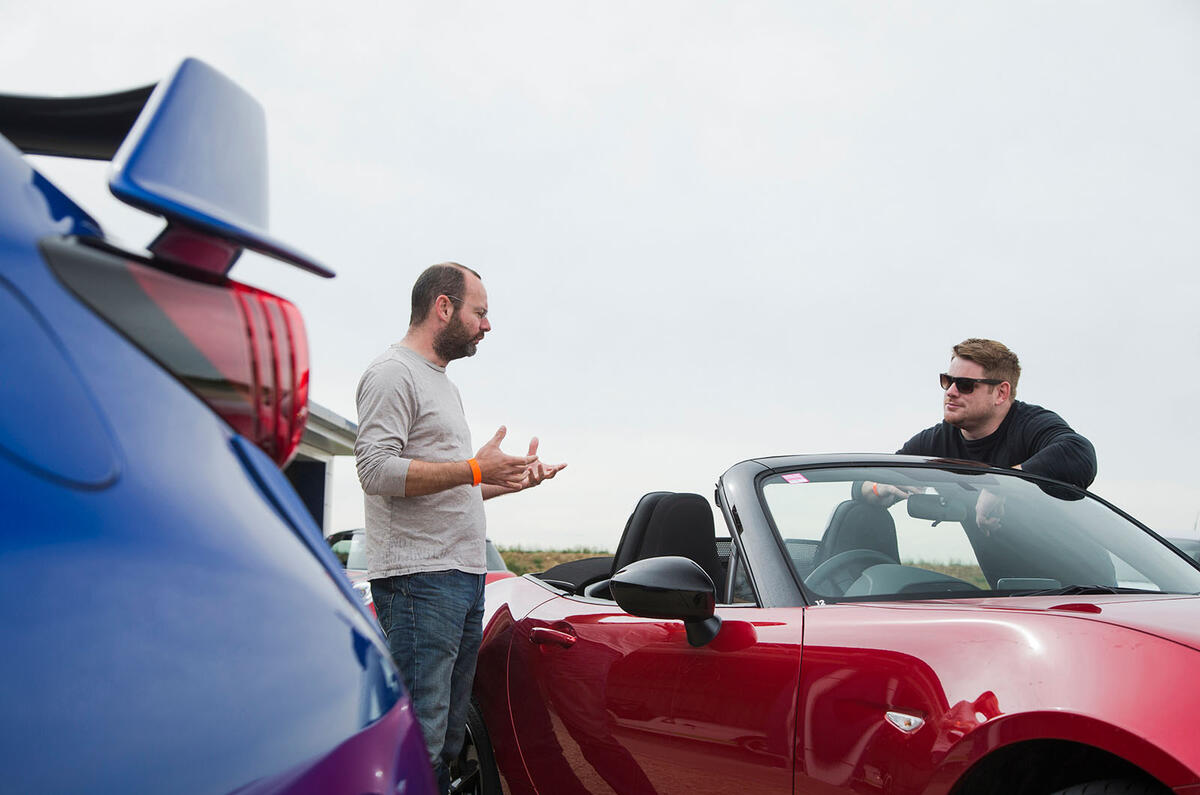
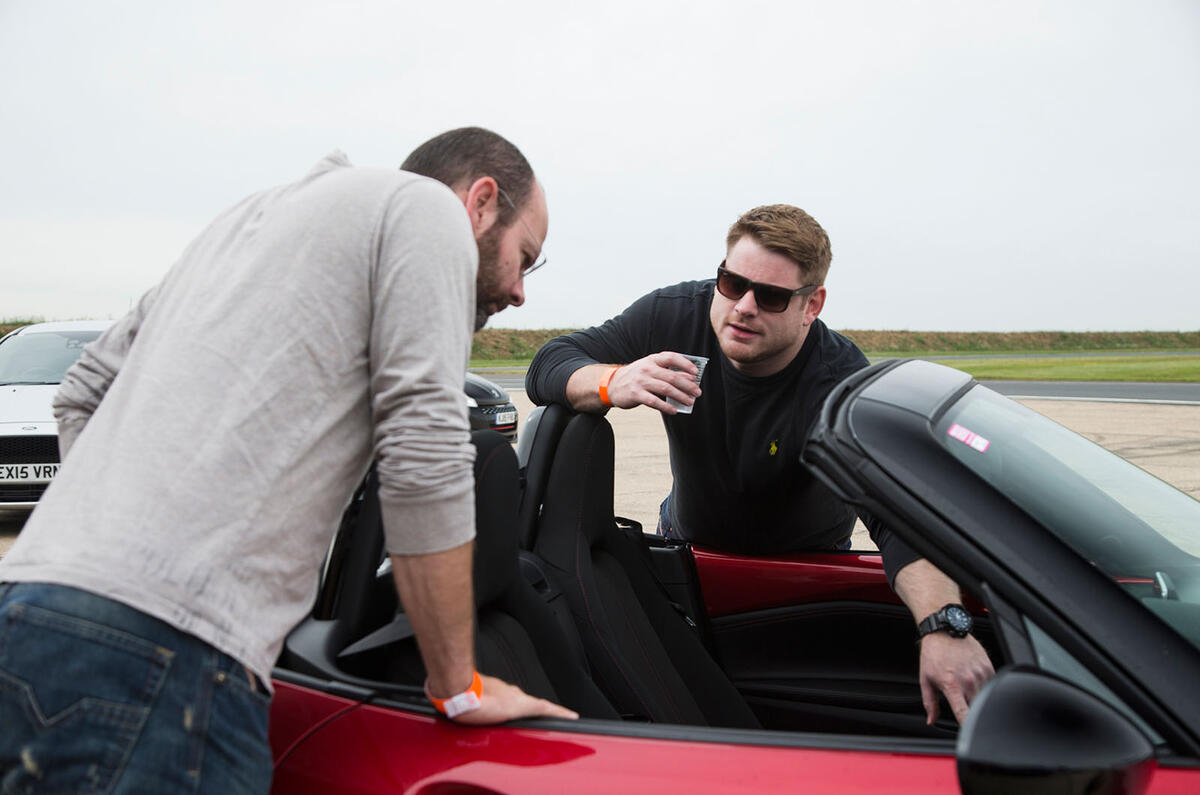
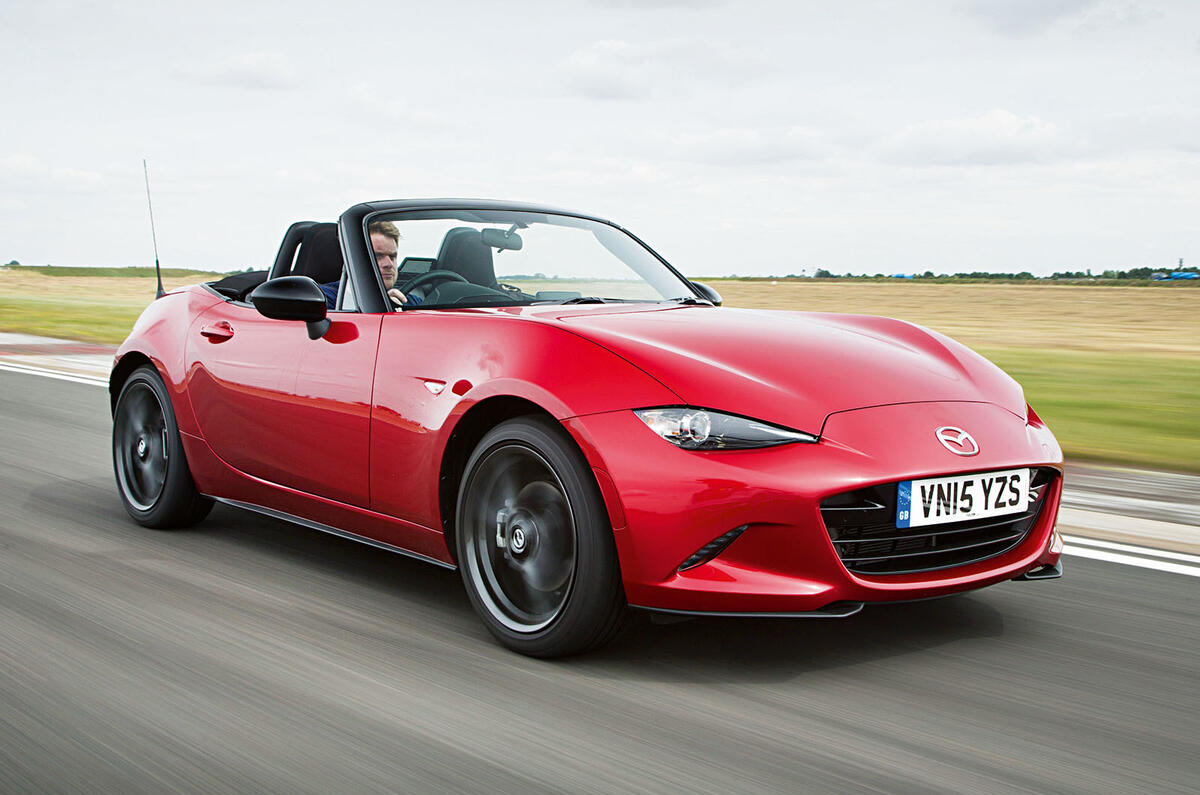
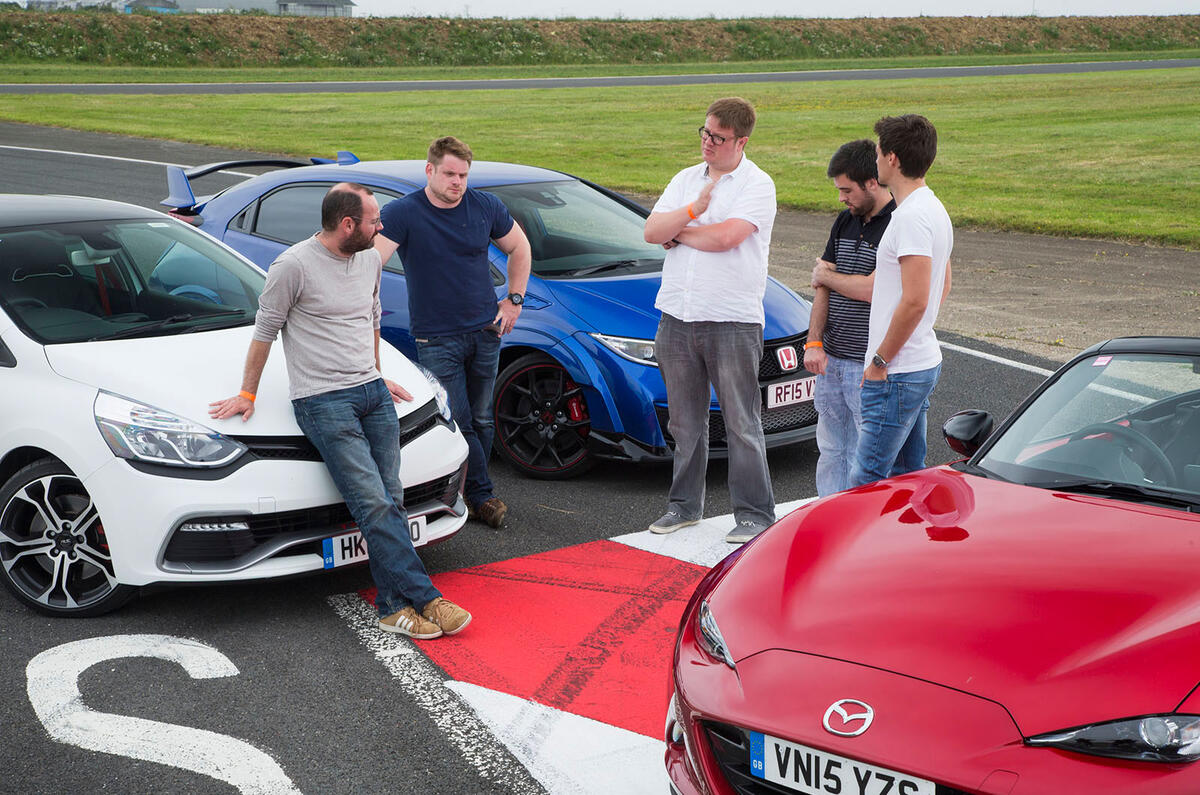






















Join the debate
Add your comment
Predictable result.
But what is the point in having a subscription if this and most or all road tests appear on the site?